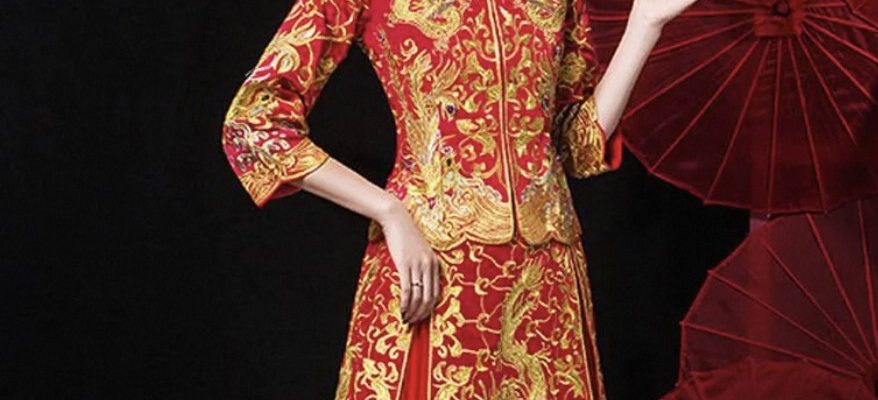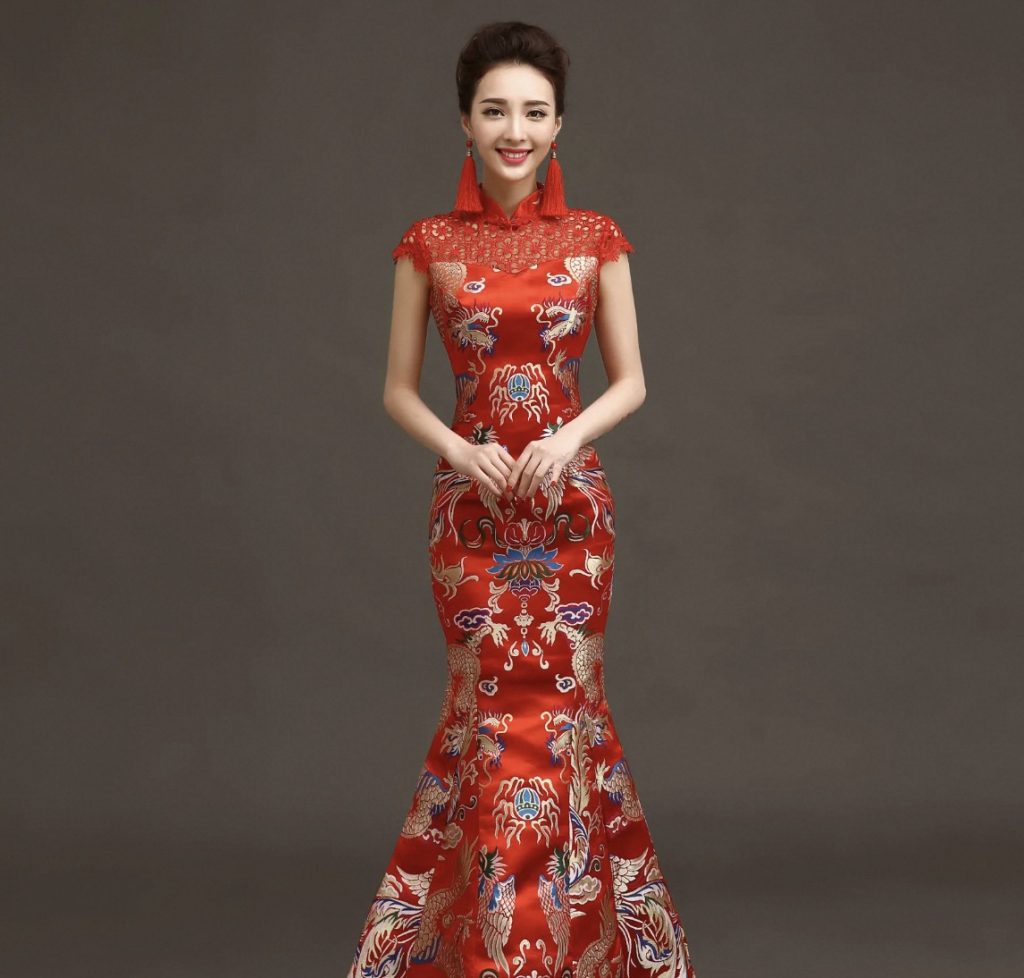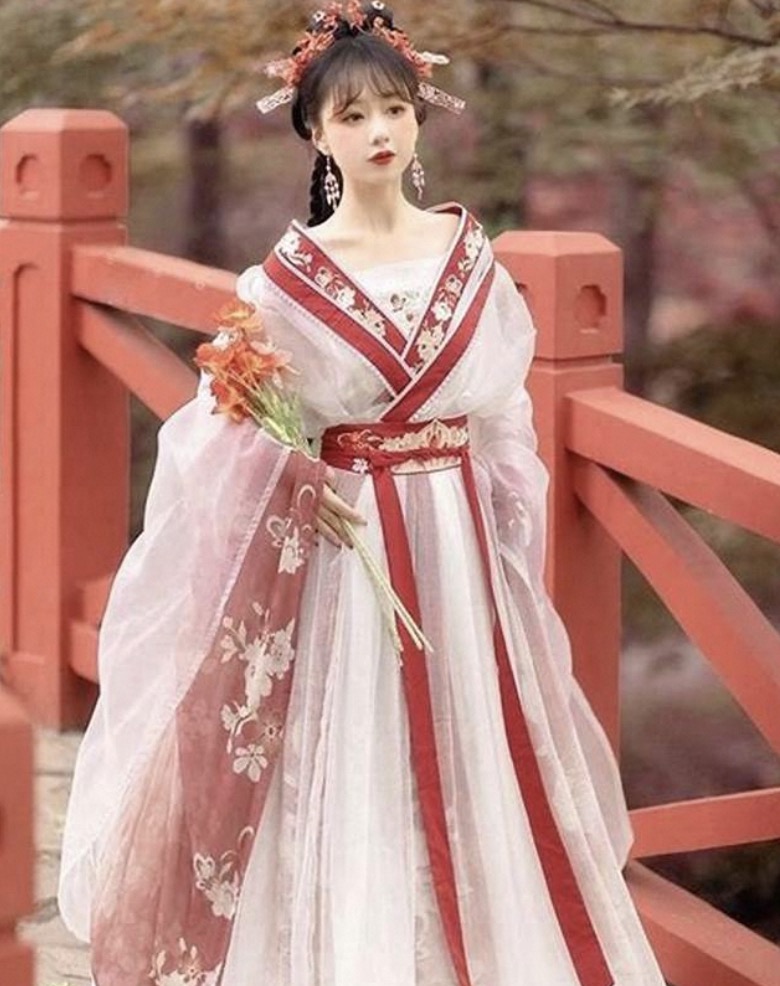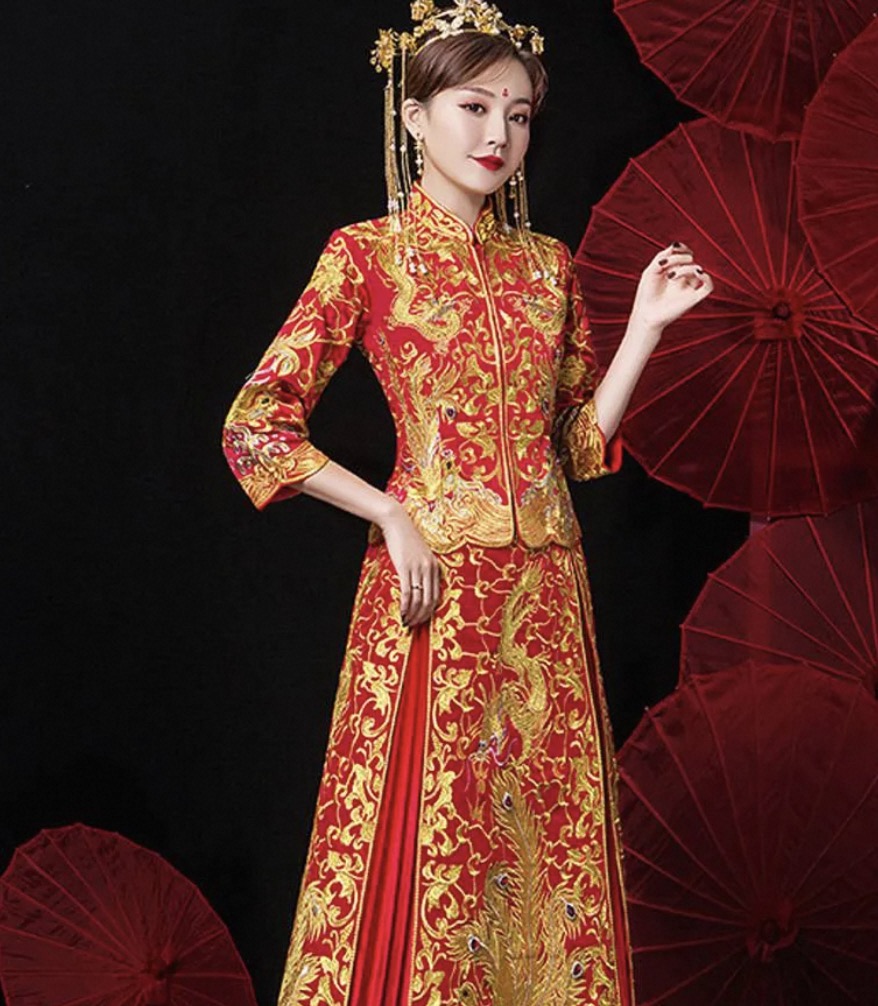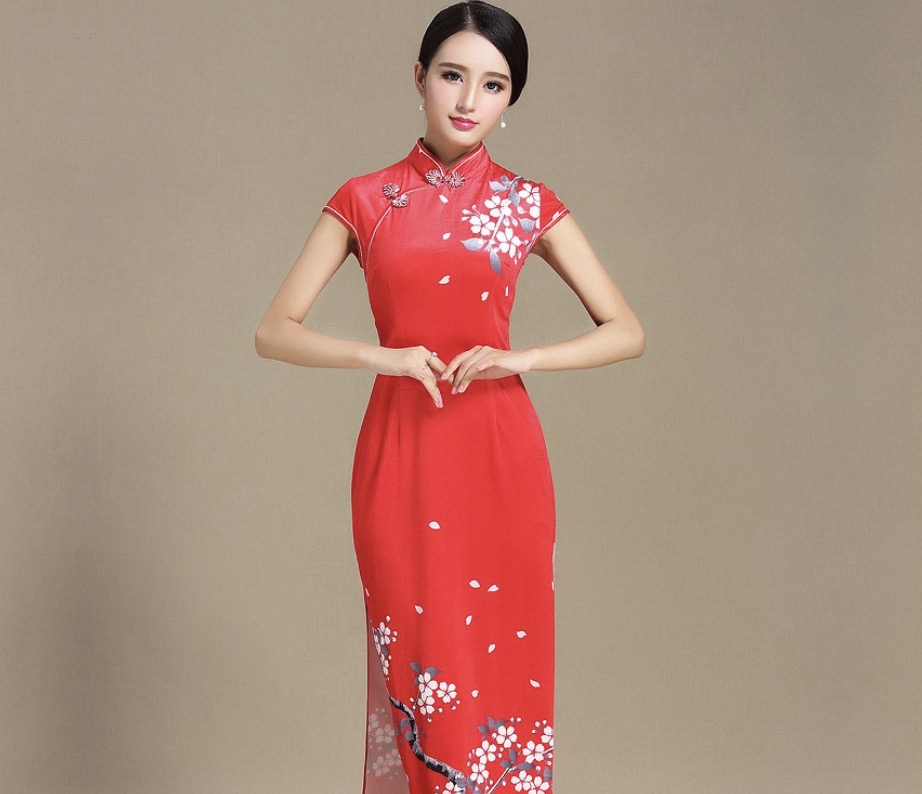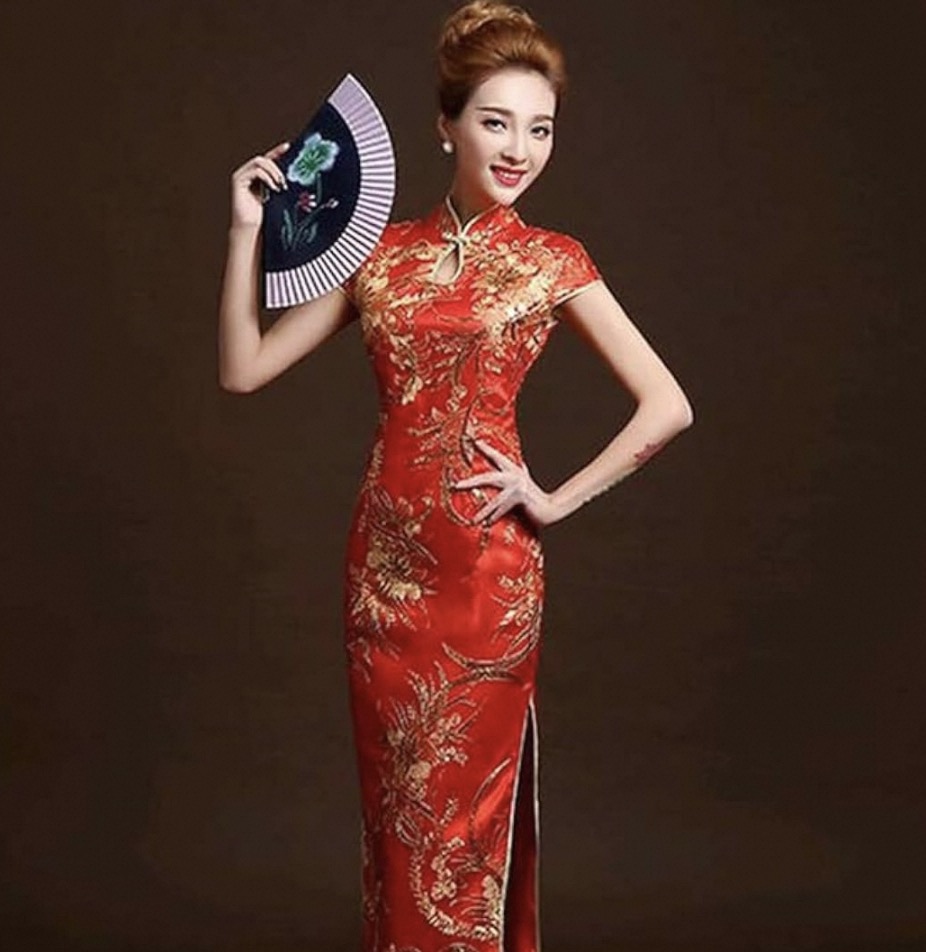Introduction:
The Chinese dress, known as Qipao or Cheongsam, embodies the convergence of China’s rich cultural legacy with modern fashion sensibilities. This traditional attire has undergone various transformations throughout history, evolving from a conservative form to a symbol of elegance and refinement. Today, Chinese dresses are not only a popular choice for special occasions among Chinese women but also a source of inspiration worldwide for their distinctive beauty and craftsmanship. This article will delve into the history, evolution, and current trends of the Chinese dress, providing insights into how this traditional outfit continues to captivate the hearts of fashion enthusiasts.
The History and Origin of the Chinese Dress
The Chinese dress boasts a legacy that dates back to the 17th century, originating from the Manchu-ruled Qing Dynasty. Originally, it was a loose-fitting garment that covered most of the woman’s body, reflecting the modesty norms of the era. With the fall of the Qing Dynasty and the rise of the Republic of China, the Chinese dress underwent significant changes, becoming more form-fitting and stylish, to symbolize the newfound liberation of Chinese women and the influence of Western fashion.
Evolution and Popularity of the Chinese Dress
Throughout the 20th century, the Chinese dress continued to evolve. The Shanghai style of the 1920s and 1930s saw the Qipao become a glamorous, high-society emblem with its sleek lines and high necks. The popularity of the Chinese dress peaked during this era, as it represented both the national identity and the modernity of Chinese women. However, with the cultural and political shifts in China, the prevalence of the Qipao waned until its resurgence as a ceremonial and formal wear option in later years.
Contemporary Chinese Dress in Modern Fashion
In modern times, the Chinese dress has found a new role in global fashion:
- Traditional Ceremonies: The Qipao is often the dress of choice for weddings and cultural events, representing a connection to heritage.
- Fashion Runways: International designers have incorporated the Chinese dress into their collections, bringing a cultural fusion to contemporary fashion.
- Day-to-Day Wear: Younger generations and fashion-forward enthusiasts are adapting the Chinese dress for everyday style, adding modern prints and altering the length for a fresh take on tradition.
Elements of a Classic Chinese Dress
Iconic characteristics define the traditional Chinese dress:
- Mandarin Collar: The high, tight-fitting collar is a hallmark of the Qipao, representing nobility and grace.
- Silk Fabric: Originally made from luxurious silk, the Chinese dress often features intricate patterns and vibrant colors.
- Side Slits: High slits on one or both sides of the dress ensure ease of movement and add an element of allure.
- Frog Buttons: Unique pankou knots serve as fasteners, elevating the aesthetic of the Qipao.
How to Select the Perfect Chinese Dress
Choosing the right Chinese dress involves several considerations:
- Fit: The Qipao should fit well, hugging the curves without being overly tight.
- Occasion: Different events may call for varying styles of the Chinese dress, from formal silk to casual cotton versions.
- Personal Style: Modern interpretations offer a range of patterns and cuts, allowing for personal expression within the bounds of tradition.
Styling the Chinese Dress for Different Occasions
Understanding how to style a Chinese dress is key to pulling off the look:
- Formal Events: Pair with elegant jewelry and heels for a sophisticated ensemble.
- Casual Wear: Opt for a shorter Qipao with flats for a fusion of comfort and chic.
- Cultural Ceremonies: Accessorize with traditional ornaments to honor the richness of Chinese heritage.
Caring for Your Chinese Dress
Maintaining the beauty and lifespan of your Chinese dress requires proper care:
- Cleaning: Follow care labels, typically favoring dry cleaning for silk to maintain the fabric’s integrity.
- Storage: Hang the dress on a padded hanger and store in a cool, dry place away from direct sunlight.
- Preserving: For heirloom quality pieces, consider professional preservation to protect against aging and wear.
The Symbolic Significance of the Chinese Dresses
More than mere apparel, the Chinese dress carries cultural and personal symbolism. Wearing a Qipao can embody a sense of national pride, a nod to family heritage, and an appreciation for the artistry of traditional Chinese tailoring.
The Timeless Appeal of the Chinese Dresses
A Chinese dress, known for its elegant structure and rich cultural significance, remains a prized garment in women’s fashion. Unlike the overtly sensual vibe of sexy dresses for women, the Chinese dress exudes a subtle sophistication with its traditional high collar and form-fitting silhouette. Even amidst modern trends, it holds its place as a garment that can be both contemporary and steeped in heritage, allowing the wearer to showcase appreciation for cultural beauty.
Chinese Dresses: A Symbol of Cultural Elegance
The beauty of a Chinese dress lies in its intricate patterns and exceptional craftsmanship. It’s a garment that can stand alongside the selectiveness of bride’s mom wedding dresses, offering an equally dignified and impressive look. The careful balance between modesty and allure found in a Chinese dresses make it a unique choice for formal events where tradition and elegance are of essence. This balance is quite distinct from the more revealing nature of a red mini dress, which is often chosen for its bold and eye-catching design.
Versatility in Styling a Chinese Dresses
One might not immediately compare a Chinese dresses to sexy dresses for women or the reserved sophistication of bride’s mom wedding dresses, yet its adaptable nature allows for various styling approaches. Accessorized correctly, it can become a statement piece at formal occasions, radiating the same level of confidence as a red mini dress but with an air of gracefulness. The Chinese dress manages to capture attention without the need for bright colors or short hemlines; instead, it relies on its figure-enhancing construction and the stories woven into its fabric.
Conclusion: The Timeless Elegance of Chinese Dresses
The Chinese dress, through its storied history and constant reinvention, continues to hold a cherished place in the landscape of global fashion. The Qipao stands as a testament to the enduring appeal of Chinese culture, the versatility of traditional apparel, and the seamless blend of the old with the new. Whether gracing a ceremonial event or integrating into daily wear, the Chinese dress remains a compelling choice for anyone looking to make an.
